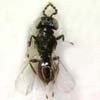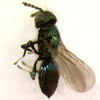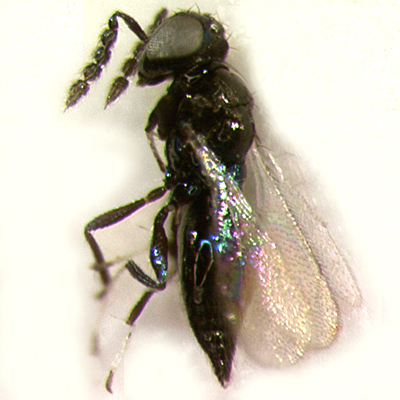 |
|||||||||||||||||||||||||||||||||||||||||||||||||||||||||||||||||||||||||||||||||||||||||||||||
|
|
Home | Open the Key | References | ||||||||||||||||||||||||||||||||||||||||||||||||||||||||||||||||||||||||||||||||||||||||||||
|
|||||||||||||||||||||||||||||||||||||||||||||||||||||||||||||||||||||||||||||||||||||||||||||||
Classification
|
|||||||||||||||||||||||||||||||||||||||||||||||||||||||||||||||||||||||||||||||||||||||||||||||
Subfamily Tribe |
Entedonini |
||||||||||||||||||||||||||||||||||||||||||||||||||||||||||||||||||||||||||||||||||||||||||||||
Diagnosis
|
|||||||||||||||||||||||||||||||||||||||||||||||||||||||||||||||||||||||||||||||||||||||||||||||
|
|
||||||||||||||||||||||||||||||||||||||||||||||||||||||||||||||||||||||||||||||||||||||||||||||
| |
|||||||||||||||||||||||||||||||||||||||||||||||||||||||||||||||||||||||||||||||||||||||||||||||
Distribution |
|||||||||||||||||||||||||||||||||||||||||||||||||||||||||||||||||||||||||||||||||||||||||||||||
|
Pediobius is a cosmopolitan genus, which is particularly common in the Old World tropics. (Noyes, 2001). |
|||||||||||||||||||||||||||||||||||||||||||||||||||||||||||||||||||||||||||||||||||||||||||||||
| |
|||||||||||||||||||||||||||||||||||||||||||||||||||||||||||||||||||||||||||||||||||||||||||||||
Biology |
|||||||||||||||||||||||||||||||||||||||||||||||||||||||||||||||||||||||||||||||||||||||||||||||
|
The species of this genus are primary or secondary endoparasitoids of a very wide variety of hosts. They are quite frequently associated with various families of Lepidoptera, but are also known from Hymenoptera, Diptera, Thysanoptera, and Arachnida. Usually they are solitary parasitoids, although sometimes they are gregarious and can occur in large numbers. Only a few species attack agromyzids; a frequent agromyzid parasitoid is P. metallicus (Nees) (Schauff, 1991; Noyes, 2001). |
|||||||||||||||||||||||||||||||||||||||||||||||||||||||||||||||||||||||||||||||||||||||||||||||
| |
|||||||||||||||||||||||||||||||||||||||||||||||||||||||||||||||||||||||||||||||||||||||||||||||
| |
|||||||||||||||||||||||||||||||||||||||||||||||||||||||||||||||||||||||||||||||||||||||||||||||
Comments |
|||||||||||||||||||||||||||||||||||||||||||||||||||||||||||||||||||||||||||||||||||||||||||||||
|
Pediobius, having 2 setae on submarginal
vein, scutellum with a pair of setae, fronto-facial suture distinctly
separated from anterior ocellus and male scape with sensory pores
placed at the ventral edge, belongs to the subfamily Entedoninae.
Pediobius may be distinguished from Achrysocharoides, Neochrysocharis, Chrysocharis, Asecodes, Trisecodes and Closterocerus by having pronotum with transverse carina and propodeum with 2 median carina complete and diverging posteriorly. Among Entedoninae with pronotum carinate and petiole distinct, Apleurotropis and Pleurotroppopsis differ from Pediobius by having mesoscutum with median longitudinal groove in the posterior half and a single propodeal median carina; Zaommomentedon Girault by having both mesoscutum and scutellum with complete and distinct median groove; Platocharis Kerrich by having diverging submedian carinae or plicae and transverse carina between submedian carina and plica; Kratoysma Boucek by having scutellum strongly sculptured with a broad median groove anteriorly; Horismenus Walker by having scutellum with median groove and propodeum with median carina bordered by depressed and often sculptured area. Pediobius will be most difficult to separate from Proacrias. Both genera have the propodeum with paired median carinae which diverge posteriorly. Both genera have a plica on the propodeum, although this is generally more distinct in Pediobius. Pediobius always has a distinct collar on the pronotum, this collar can be present or absent in Proacrias. Proacrias has 2 funicular segments, while Pediobius usually has funicle 3-segmented. In Pediobius the postmarginal vein is quite short; in Proacrias the PMV is variable, but can be longer than the stigmal vein. One character that seems to be able to separate these genera is that in Pediobius the median carinae on the propodeum, after diverging, continue without turning to the posterior margin of the propodeum, there is a complete carina on the posterior margin of the propodeum between the median carina and the plica, and the posterior margin of the propodeum is extended into a small neck (nucha) medially. In Proacrias the median carinae turn back posteriorly rather abruptly and define a trapezoidal area, there is not a carina along the posterior margin of the propodeum, and the posterior margin of the propodeum is not extended into a neck medially. Numerous studies have been published on Pediobius: keys are available for Europe (Boucek, 1965), Russia (Kostjukov, 2000a), North America (Peck, 1985), Japan (Kamijo, 1986) and India (Surekha & Narendran, 1993; Khan, 1996). Moreover, Kerrich (1973) revised the Tropical and Subtropical species. |
|||||||||||||||||||||||||||||||||||||||||||||||||||||||||||||||||||||||||||||||||||||||||||||||



